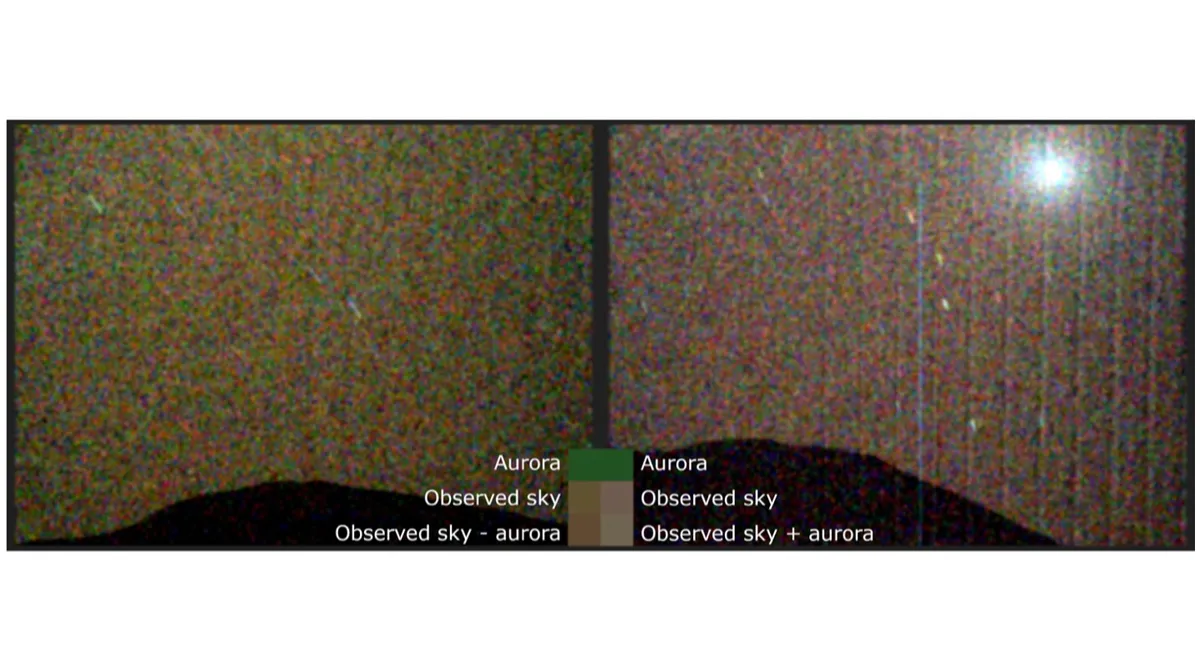
NASA's Perseverance rover has achieved a remarkable milestone in skywatching history by becoming the first spacecraft to observe auroras from the surface of Mars. In mid-March, the car-sized rover captured stunning auroras illuminating the Martian skies, a groundbreaking discovery that opens new avenues for auroral research. According to Elise Knutsen, a postdoctoral researcher at the University of Oslo and the lead author of a study on this finding, this significant event confirms that future astronauts could witness these breathtaking light displays on Mars.
Auroras occur when charged particles emitted by the sun collide with molecules in a planet's atmosphere. On Earth, our magnetic field directs most solar particles toward the poles, resulting in auroral displays that are typically confined to high-latitude regions. Occasionally, during major solar events known as coronal mass ejections (CMEs), auroras can be seen at lower latitudes as well. In contrast, Mars has lost its global magnetic field long ago, a change that drastically altered its atmosphere and contributed to the planet's drying out.
Because Mars lacks a strong magnetic field, its auroras manifest differently than those on Earth. For instance, when a significant CME impacts Mars, the entire Martian sky can become aglow with vibrant colors. While these alien auroras have been detected from orbiting spacecraft, no surface mission had successfully captured this phenomenon—until now.
Knutsen and her team meticulously calculated the optimal angles for the rover's two essential instruments: the MastCam-Z camera system and the SuperCam spectrometer. Collaborating with researchers at NASA’s Goddard Space Flight Center, they pinpointed CMEs that could potentially generate observable auroras on Mars. On March 15, Goddard scientists identified a CME that was likely to create a visible auroral display.
Space physicist Christina Lee from the University of California, Berkeley, who leads the space weather team for NASA's MAVEN Mars orbiter, disseminated this critical alert to other Mars mission teams, including Knutsen's group. "Upon assessing the strength of this CME, we estimated it could produce an aurora bright enough for our instruments to detect," Knutsen explained. The predictions proved correct when the CME struck the thin Martian atmosphere a few days later, resulting in a green aurora that enveloped the planet's skies.
As on Earth, the green hue of the auroras on Mars was produced by light-emitting oxygen atoms. The MAVEN orbiter and Europe's Mars Express also detected solar energetic particles in the Martian atmosphere during this event, confirming that Perseverance successfully recorded an aurora from the planet's surface. Shannon Curry, Principal Investigator for MAVEN and a research scientist at the University of Colorado Boulder, praised the cooperative effort, stating, "This was a fantastic example of cross-mission coordination. We all worked together quickly to facilitate this observation and are thrilled to have finally gotten a sneak peek of what astronauts will be able to see there someday."
Perseverance's aurora observations, detailed in a study published in the journal Science Advances, hold significance beyond their visual allure. Auroras are a product of space weather, which can significantly impact spacecraft and human explorers venturing beyond Earth's protective magnetic field. According to Katie Stack Morgan, acting project scientist for Perseverance at NASA’s Jet Propulsion Laboratory, these observations provide a new approach to studying auroras that complements data from Mars orbiters. Understanding the conditions that lead to auroras on Mars is crucial as preparations intensify for sending human explorers to the Red Planet.